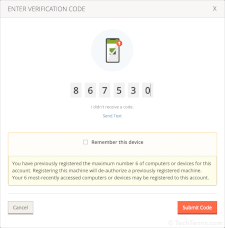Two-Factor Authentication
Two-factor authentication (2FA) is a security measure that requires two forms of authentication to access an account. It often works in combination with a username and password to add an extra level of security.
While a standard login with a username and password provides reasonable security, it can be easily compromised. For example, if someone knows your email address and guesses your password, he or she may be able to access your account. Two-factor authentication adds another layer of security that protects your account even if someone finds out your login information.
Below are several types of two-factor authentication:
- A four to six-digit code sent via text message to the user's mobile phone
- A one-time code sent via email to the user's email address
- An additional PIN or passcode required in addition to a username and password
- A secret question and answer created by the user
- A physical token, such as a small "key" that displays dynamic code
- A hardwired dongle linked to the user's account
- A biometric identifier such as a fingerprint or facial recognition.
In many cases, two-factor authentication is only required once per device. After you have successfully logged into a website on a specific device, the site may set a cookie in your browser. Once this cookie is set, your device becomes the secondary authentication for future logins.
Some websites and online services offer two-factor authentication as an optional security feature, while others require it. 2FA options are typically located in the "Password & Security" settings within a user account.
 Test Your Knowledge
Test Your Knowledge